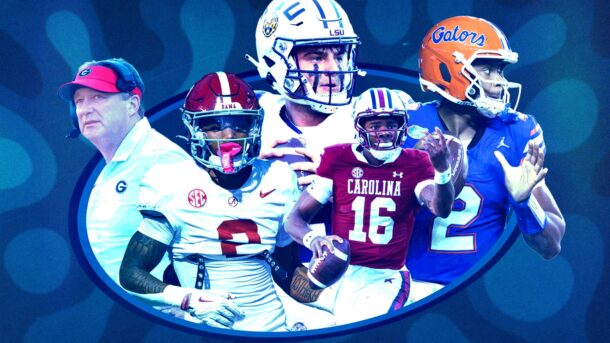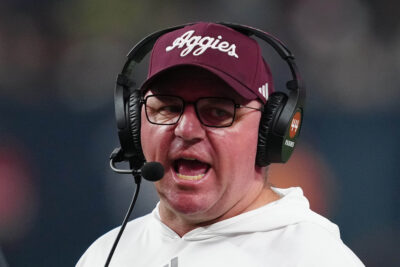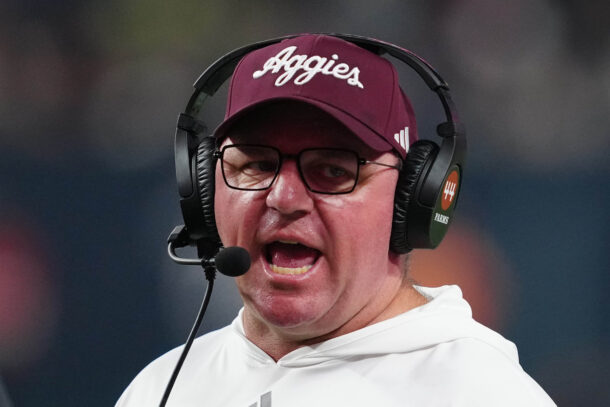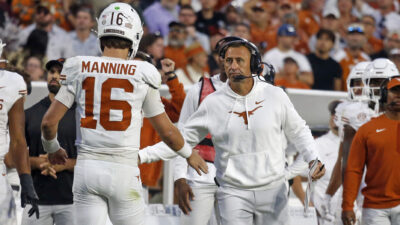
Mizzou’s Odom faces difficult questions during his first offseason
By John Brasier
Published:
Questions abound at Missouri. Only one season removed from back-to-back SEC East title runs guided by the conference’s most-stable coaching staff, Mizzou football seems to be in a state of flux.
The coaching staff is different. Coach Gary Pinkel resigned suddenly after 15 seasons to fight follicular lymphoma. New coach Barry Odom, promoted from defensive coordinator, did not retain defensive line coach Craig Kuligowski, who produced a constant stream of premier pass rushers.
The offensive line, traditionally a Mizzou strength, was horrible in 2015 and lost most of its starters. A disappointing receiving corps, devoid of playmakers and consistent targets, doesn’t seem to have any immediate help on the way.
Quarterback looms as a likely battle between Maty Mauk, the troubled link to the Tigers’ division-winning teams, and Drew Lock, the highly regarded prospect whose development is counted on for the next three seasons.
Odom has made improved recruiting a priority, retaining important assistants Andy Hill and Cornell Ford and bringing in Mizzou alumnus and St. Louis area native DeMontie Cross as defensive coordinator. New safeties coach Ryan Walters is also a proven recruiter.
Then there’s the fallout — in recruiting and team chemistry — from a walkout and threatened strike by black players in support of demands from black students involving minority issues on campus.
Odom doesn’t have an easy job in his first season. Here’s a list of the top questions he faces during the offseason:
5. HOW TO REPAIR THE OFFENSIVE LINE
Odom faces the formidable task of rebuilding an offensive line that lost four senior starters and another senior who logged considerable playing time during his career. The replacements must be better than their predecessors. Unable to create running lanes or protect the quarterback, the line was a major reason why the Tigers averaged only 9.2 points per game in SEC games. In 2014, the Tigers offense relied heavily on jump-ball throws to outstanding receivers Jimmie Hunt and Bud Sasser. Mizzou will depend heavily on development of rising senior Malik Cueller and the three redshirt freshmen on the second team this season. First, Odom must find a replacement for offensive line coach A.J. Ricker, who was not retained.
4. HOW TO REPAIR THE RECEIVER CORPS
A strength of the program over most of the last decade, producing NFL receivers Jeremy Maclin and Danario Alexander, and NFL tight ends Chase Coffman and Martin Rucker, the Tigers’ receiving corps had no reliable targets, much less playmakers in 2015. Odom has to find some in a hurry. So far, the Tigers don’t have an expected impact player in the upcoming recruiting class, leaving Hill the task of developing returnees J’Mon Moore and Nate Brown along with several rising sophomores.
3. SETTLING THE QUARTERBACK BATTLE
Lock’s struggles behind the porous line with little help from his receivers provided evidence that Mauk wasn’t the primary reasons for the Tigers’ offensive slump. Now, Odom and offensive coordinator Josh Heupel must decide which way to go in 2016: continue with Lock, the better passer with three seasons of eligibility remaining, or go back to Mauk, whose grit and competitiveness helped the Tigers win two division titles? Mauk’s initial disciplinary problem this season remains undisclosed. But Odom has reinstated him while making it clear Lock will enter the spring atop the depth chart.
2. HANDLING THE FALLOUT FROM THE WALKOUT
The walkout by black players in support of demands by a campus organization seemed divisive. Some of the Tigers’ top white players, including LB Michael Scherer and Lock came to practice reportedly unaware of the walkout. Many program supporters question whether boycotting games would have been threatened if the Tigers hadn’t been 4-6 at the time. Some students and boosters are troubled that the reasons for the strike were a few non-violent incidents committed by unknown perpetrators, and that the football players had the power to drive out the university president and chancellor. Put in a difficult position, Pinkel backed the black players — what else could he do? — then later denied he supported the protest demands, which included mandatory diversity training for all students, faculty, staff and administration and that the university president deliver a hand-written apology and acknowledge his “white privilege.” Odom did not retain popular strength coordinator Pat Ivey, who reportedly was connected to the player walkout. Can Odom pull the team together and repair fences with disillusioned program supporters?
1. IMPROVING RECRUITING
As great as Pinkel’s staff was at developing unheralded talent into solid, sometimes standout, players at the SEC level, Odom needs to boost Mizzou’s recruiting. The athletic department has made several facility improvements and a new football facility at the stadium is on the way. Now, it’s time for Mizzou to reap the benefits of its recent success — four conference championship game appearances since 2007 — and bring in the upper-tier recruits needed to sustain success against the top SEC programs. The addition of Cross should improve Mizzou’s recruiting, especially in St. Louis’ talent-filled north suburbs, where the Tigers have enjoyed only limited success. With Cross and Ford in St. Louis and Hill in Kansas City, Mizzou is solid in the state’s two major metro areas. Pinkel was successful finding hidden gems in Texas, but had little luck in Georgia and Florida after switching Mizzou’s out-of-state focus when the Tigers joined the SEC. Odom, an Oklahoma native, may take more of the Tigers’ efforts back into Texas — Cross has extensive experience in the Lone State State. With a younger staff than Pinkel’s veteran crew, Odom may be more effective in recruiting the four- and five-star prospects Pinkel rarely signed.






